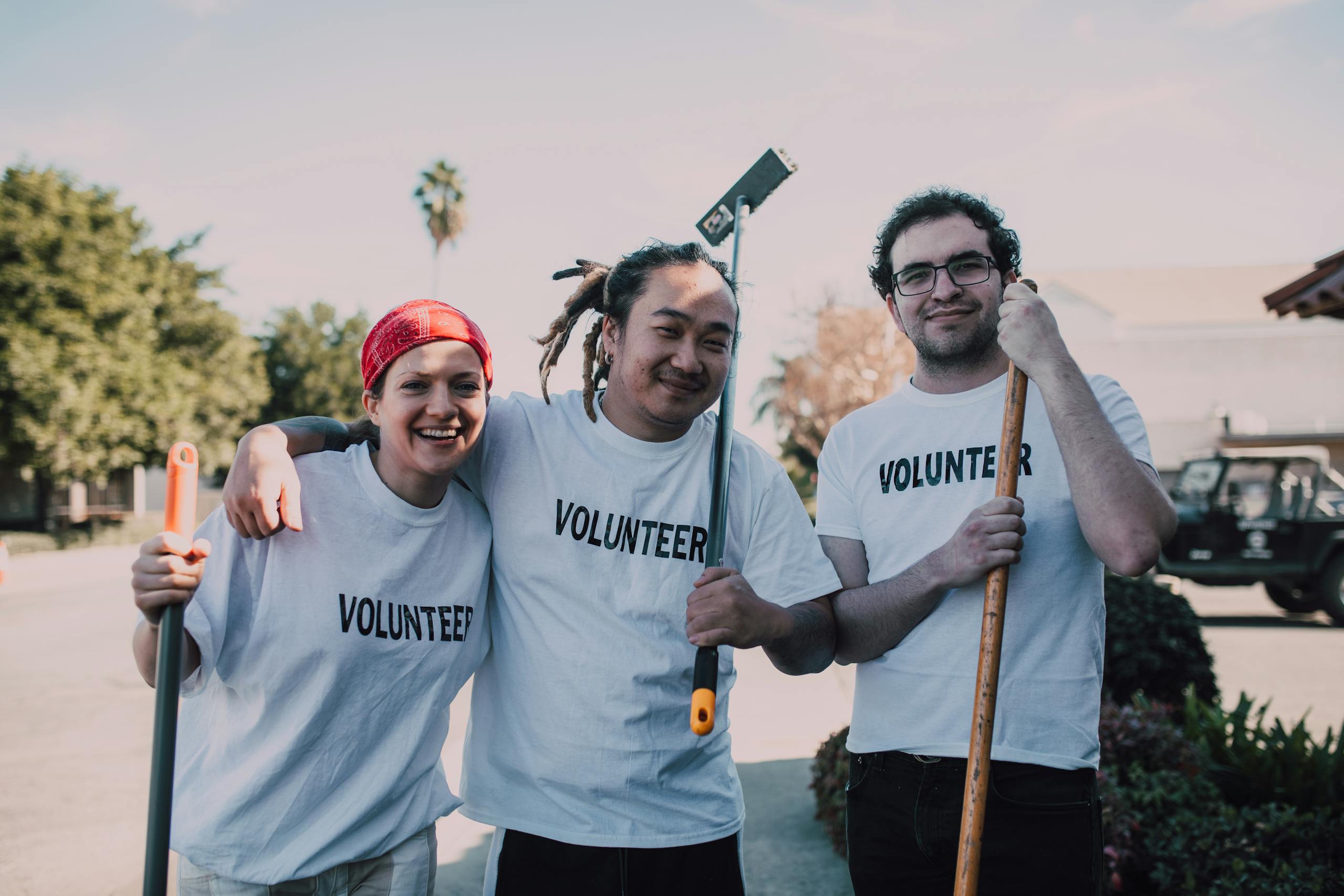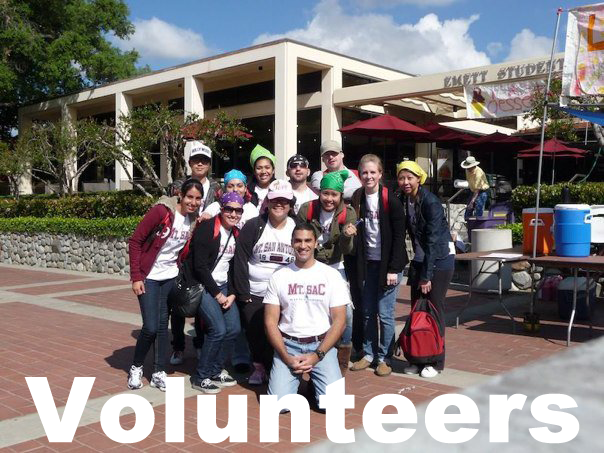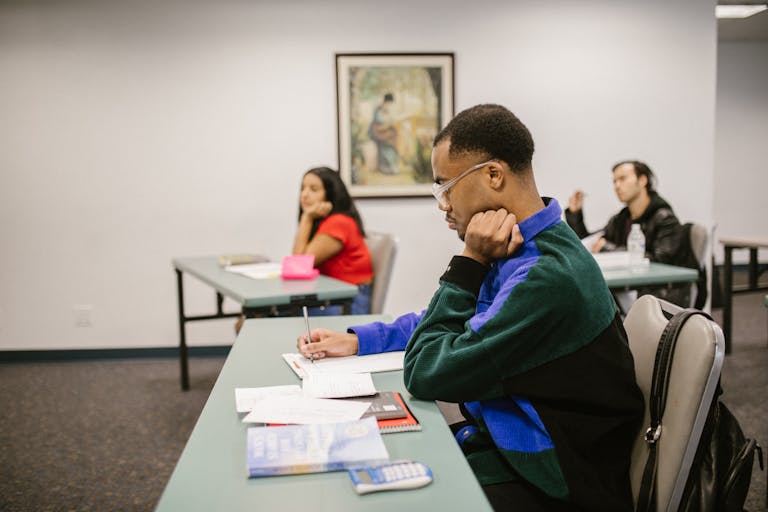As a the head of the hospitality management program at my college, I get contacted by various community organizations, profit and non-profit, looking for students to volunteer for a number of things ranging for being ushers at a major international event like the Breeders Cup World Championships to being Food Safety Advisors at the International Festival at the Claremont Colleges.
As exciting as these opportunities are for me to share with my students, I need to bear in mind that many students are not immediately aware of the benefits of volunteering. Many of my students are commuter students, some have jobs, some are parents and all of them seem to have little to no time to serve the community and volunteer in anyway. Or do they?
Well, when I first began introducing the concept of volunteering to my students, I naturally assumed that my students would jump at the opportunity. I mean who wouldn’t want to do something new and fun with their classmates off-campus? Who wouldn’t want an opportunity to meet new people and gain new experiences that would enhance their resume? The answer was most of my students. Why? Because while in my mind I was focused on how they could benefit the community and how much they would learn from these opportunities, my students were trying figure out what was in it for them. After all, they’re too busy. Why should they take time out of their valuable schedules to work for free on the weekend? What will they gain from it?
Once I understood my students’ thought process and reluctance, it became a lot easier for me to then address the “what’s in it for me?” question in a way that would get them interested and even excited about volunteering. I needed to “sell” them on the benefits of volunteering. Enthusiasm alone was not going to be sufficient; I needed to throw in an incentive and show them how volunteerism can enhance their resumes.
Over the years I have modified my approach to presenting volunteer opportunities to my students to the following 2 things.
1. Pick the Right Event
While I might be excited about volunteering for a particular cause or organization, it may not necessarily be the right fit for my students. For example, many years ago I was presented with an opportunity to have my students volunteer for a public radio event in Los Angeles. I thought it was going to be a wonderful opportunity for students to become actively engaged in the community and learn about how public radio programming serves the community. However, most of my students didn’t really get excited about the idea and weren’t really sure how it was relevant to them.
Frankly speaking, it wasn’t relevant to them. It may have been relevant perhaps to a broadcast journalism major but not a hospitality management major. So I started being very selective about the volunteer activities that I presented to my students and only focused on events or organizations that were related to my students’ major. I needed to pick something that made sense for my particular students. It was much easier and effective selling them on the idea of volunteering for something they understood and were familiar with rather than any random cause.
So pick something related to what you’re teaching or what they are learning. It needs to resonate with them. Think of opportunities that would allow your students to practice or apply what they learn from you. Now this is easier to do with some disciplines than others, but there’s no shortage of opportunities. If you’re finding it hard to think of opportunities, you may want to consider looking into one of the following options to help you to get you started:
- Option 1: Check out volunteermatch.org. They list volunteer activities by area of interest and locality.
- Option 2: Contact the local chapter of some of your professional associations and find out if they are in need of volunteers for some of their events, perhaps their annual conference or convention.
- Option 3: Contact your city’s Parks & Recreation department, and get a list of their annual events, and find out if they need volunteers.
- Option 4: Identify local charities and businesses that may provide services or opportunities for your students to help out with and in return learn something that will enhance what you’ve taught them. For example, if you’re a Math or English professor your students (some of them) could volunteer to serve as math, reading, or writing tutors at the local library, Boys & Girls Club, or YMCA.
- Option 5: Create your own volunteer activity. You don’t always have to serve the community through a third-party organization. Identify a need within your area related to your discipline and build an event around it. Ask yourself what are some of the concerns or problems within your community as they relate to your discipline and develop a way to be part of the solution.
2. Sell the Event
Once you’ve identified a volunteer activity, you’ll need to begin developing the pitch that you’ll use to get the students interested in the event you want them to volunteer for.
There a few things you can do to help you sell the event to the students.
First, do your due diligence! Research the organization that you selected and find out everything you can about them and more, specifically the event in which you’d like your students to participate in. Knowledge here is power that will help you speak confidently about the event. If you sound uncertain or unfamiliar with the volunteer activity, you’ll have a much harder time convincing your students to sign-up.
Additionally, share photos or video clips showcasing the event to your students
Secondly, project enthusiasm! You need to remember that your students will only get excited about an event if you are genuinely excited about the event yourself. Don’t fake it! Be genuine!
Thirdly, provide value! Students want to know what value this event holds for them. In other words, what can they gain by volunteering? They want to know what’s in it for them not necessarily from a selfish perspective but from a contextual perspective. How does volunteering relate to what they are learning in your class and how will it enhance their experience, education, and/or career?
I usually provide my students a list of benefits for volunteering. Here’s a sample of my benefits list that I share with students I am recruiting to volunteer as Food Safety Advisors at the International Festival at the Claremont Colleges.
This would be a great opportunity for you to:
- work in the field for a day
- add this experience to your resume (I actually show them how to document this on their resume)
- apply your Food Safety Sanitation knowledge (my students are Certified Food Protection Managers)
- gain supervisory experience
- meet and work with people from around the world
- get a free festival pass worth $15\- (includes free food and drinks vouchers)
- enjoy the festival and the entertainment once you’re done with your shift (3 hours)
- receive a free college T-shirt to wear on the day you volunteer
- earn extra credit. 50 Points towards any (1) of my (Dr. Al-Malood’s) HRM courses in which you’re currently enrolled in. (You must attend the entire event to receive extra credit)
I tell my students that after the event is over they can add this experience to their resumes. I usually get a few quizzical stares when I say this and a few of them will say, “Really?” The answer is always yes! Any industry related experience, even if it is voluntary, is still valuable experience. I usually provide my students with an example of how to present this experience on their resume.
Here’s an example:
Food Safety Advisor, Volunteer
35th Annual International Festival-Claremont Colleges
- Inspected food service booths pre-service to ensure vendors equipment, tools, and utensil were ready.
- Monitored food temperatures to ensure they met health department regulations.
- Supervised food service vendors to ensure they complied with food safety and sanitation standards.
- Provided expertise to vendors on proper heating, preparation, handling, storage, and service of food.
- Reported violations to the event director.
3. Manage The Event
Once you’ve shared and hopefully sold the idea of volunteering to your students, you’ll need to work on managing the event. This includes three things:
1. Sign-Up
Create a way for students to sign-up for the event. I used to pass out sign-up sheets in class, but I’ve since moved to creating online sign-up sheets on Google Forms. They’re easy to create and free!
The sign-up sheet should include the students:
- full name
- cell phone number
- email address
- student id number, if needed
- emergency contact
- the class which the student wants to apply the extra credit towards (assuming they’re taking more than one class with you)
2. Pre-Event Planning
Setup a meeting at least 1 week prior to the day they volunteer to discuss every aspect of the event. Here’s a list of the things that you need to cover. Be sure to have this written down for the students:
- Student duties while volunteering
- Dos and don’ts
- Behavior and grooming standards (remember that the students are representing your college and your discipline)
- Dress code/attire appropriate for the event
- Start and end time
- Directions (provide the address and a map)
- Parking (encourage students to carpool if they’re driving)
- Contact (be sure to get all of your students’ cell numbers and make sure they have yours)
- Meeting spot at the event
Side-Note: Some schools require these types of events to get approved by the administration before the students can attend. Students may also need to sign a liability waiver before participating. Check with your school’s administration regarding policies dealing with off-campus student activities and travel.
3. Document
Be sure to document the event. Take a camera with you or use your smartphone to take high-quality photos of your students volunteering. You can share the photos with the students, event organizers, and post them on the college website, Facebook, Instagram, Pinterest or other social media pages. Your photos will become a useful tool to share with future students whom you hope to recruit for volunteer events.
4. Post-Event Meeting
Debrief your students after the event is over. Meet with your students for 15-20 minutes after the event to discuss what worked and what didn’t. The debriefing is a learning session for both you, as faculty, and the students. This is also an opportunity for you to share your thoughts and gratitude with the students for taking time out of their schedules to participate in the event.
So to recap, the three things you need to do to you get your students excited about volunteering and successfully manage the volunteering experience are:
- Pick the right event.
- Sell the event.
- Manage the event.
If you found this post useful, I’d be grateful if you’d help spread the word by sharing this with friends or colleagues on LinkedIn, Facebook, Twitter, Reddit, or any other social media platform you use.
“Volunteers do not necessarily have the time; they just have the heart.”
-Elizabeth Andrew





